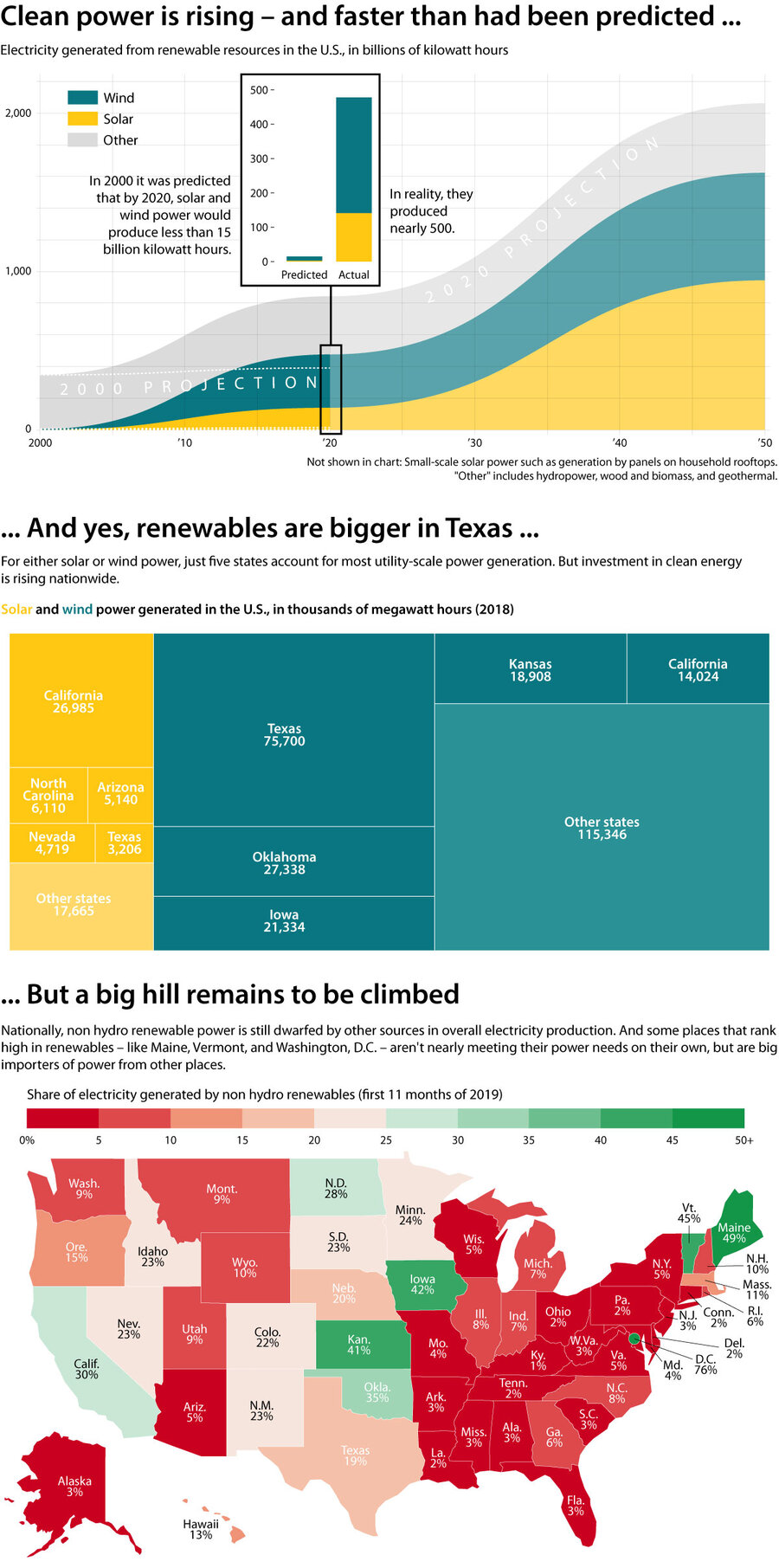Solar and wind energy trounced the forecasts. Can they do it again?
Loading...
Last year, for the first time, wind overtook coal as a power source in Texas. It lasted only a few months, but soon it may be the permanent reality. And it symbolizes major shifts underway beyond Texas.
The renewable energy industry’s growth has been consistently outpacing forecasts. In 2000, the U.S. Energy Information Administration (EIA) predicted the nation would generate 15 billion kilowatt hours of electricity from wind and solar in 2020. The actual amount today is already 33 times that amount, with nonhydro renewables making up about 12% of total U.S. power generation.
“There was a lot of policy that happened between 2000 and 2020,” says Christopher Namovicz, an analyst at the EIA. “Costs have come down because a number of states started implementing renewable portfolio standards, the federal government continued to renew its tax credits,” and international markets have spurred technological development.
Such circumstances would need to continue – particularly in the solar and wind industries – for renewables to beat their current projections for 2050. Is that possible? Even to industry insiders that’s unclear, says Mr. Namovicz.
“I remember going to a conference years ago with somebody from the solar industry who said, ‘Every year internally we look at what costs are and say, oh, costs have got to bottom out at some point and they can’t really go much further.’ And then next year, they’re down even lower.”
Editor's note: This story has been updated to correct the unit of measurement used in the second graph. It is megawatt hours.






